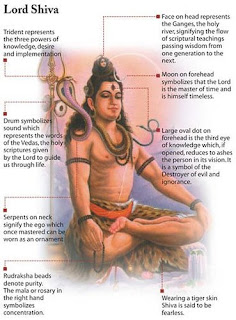Hindu Muslim Integration
* The bhakti movement. One of the most notable developments in Hinduism during the medieval period was the rise of bhakti movement, which emphasized devotion and surrender to God as the best means to salvation. The bhakti movement was not based on new ideals, but age old concepts of Hinduism, well emphasized as early as 10th century BC in the scriptures such as the Puranas and the Bhagavadgita and the sectarian movements like Saivism and Vaishnavism. It played an important role in helping Hinduism to face the challenges posed by the monotheistic Islam, with its emphasis on a personal relationship between man and one God, through prayers, surrender, cultivation of virtues, performance of good deeds and obedience to His law. Bhakti movement refined Hinduism, strengthened its roots and prepared it for a challenging and prolonged confrontation with Islam on a level playing field.
* Indo-Sarcenic architecture. The early Muslim rulers relied upon local talent and used the material from the temples they destroyed to build monuments, as their focus was mostly on expanding their empires and consolidating their power, rather than undertaking large scale projects and elaborate structures. However as the time passed by, they began inducting Persian architects, along with native builders, in the construction of their buildings and mosques. This resulted in the emergence of distinct architectural styles that are collectively referred as Indo-Islamic or Indo-Sarcenic architecture, which can be seen in many medieval structures that are still intact in places like
* The spread of Sufism. The Sufi movement placed more relevance upon personal and mystic experience in receiving the knowledge and truth about God, rather than upon the codified laws of Qu'ran. The philosophy and practices of Sufi saints were similar in many ways to those of many ascetic traditions of Hinduism, especially Saivism of the kind that prevailed in
* The tradition of Satyapir. Veneration of Hindu saints by Muslims and Muslim peers by Hindus resulted in the common tradition of worshipping Satyapir or a True Saint.
* Growth of Urdu. One of the significant developments in medieval
* Purdah System. Centuries of Muslim rule and frequent abduction of Hindu women by Muslim soldiers and Mongolian invaders led to the practice of purdah by Hindu women in certain parts of northern
* Exchange of ideas. Hindus borrowed ideas and concepts from Muslim astronomy, calendar (Zich), medicine, metullargy, and a special branch of horoscopy called Tajik, while the Muslim scholars studied Hindu scriptures, Vedanta and the Hindu medical science of Ayurveda, Hindu astrology and the techniques of Yoga and meditation. Many of these ideas traveled far and wide to
* The founding of Sikhism The integration of Islamic and Hindu ideas through Bhakti movement reached its zenith in the teachings of Guru Nanak, which eventually led to the formation of Sikhism as a separate religion, under Guru Arjun Singh, the fifth Sikh Guru. Sikhism combines the best of both Hinduism and Islam. Many of its concepts and practices are similar to those of either Islam and Hinduism. Sikhism considers the distinction between the God of Hinduism and of Islam to be in name only. God is the one and the only Truth. He has many names and powers and can be reached through prayers, good works, selfless service, intense longing and devotion, not only in direct communication with God as in Islam but also with the help of a Guru.
* The Din-Ilahi of Akbar. Known for his religious tolerance and interest in the comparative study of world's major religions, Akbar, the greatest of the Mughal rulers, promulgated a new religion called Din-i-Ilahi or Tauhid-i-Ilahi in 1581, a religion, which he believed, would be acceptable to both Hindus and Muslims. According to Dr.Ishawri Prasad, the Din-i-Ilahi "was an ecclectic pantheism containing the good points of all religions - a combination of mysticism, philosophy and nature worship. Its basis was rational; it upheld no dogma, recognized no gods or prophets, and emperor was its chief exponent." Whatever might be the consequences of Abkar's folly or wisdom, the Din-i-Ilahi was a fine example of the vision of religious harmony, amity and understanding, the enlightened minds of medieval
* Political implications. The continuous Islamic rule in the subcontinent and the conversion of many native Hindus to Islam resulted in the creation of sizeable Muslim population, culminating in the formation of
Over the centuries, Hindus and Muslims learned to live in peace and amity with each other to the extent possible, despite the gulf that stands between them, in the form of uncompromising religious beliefs and practices that are difficult to ignore. Each side recognizes the onerous responsibility that rests with them in maintaining peace and harmony, in the common interests of all and in the interests of








Comments
Post a Comment